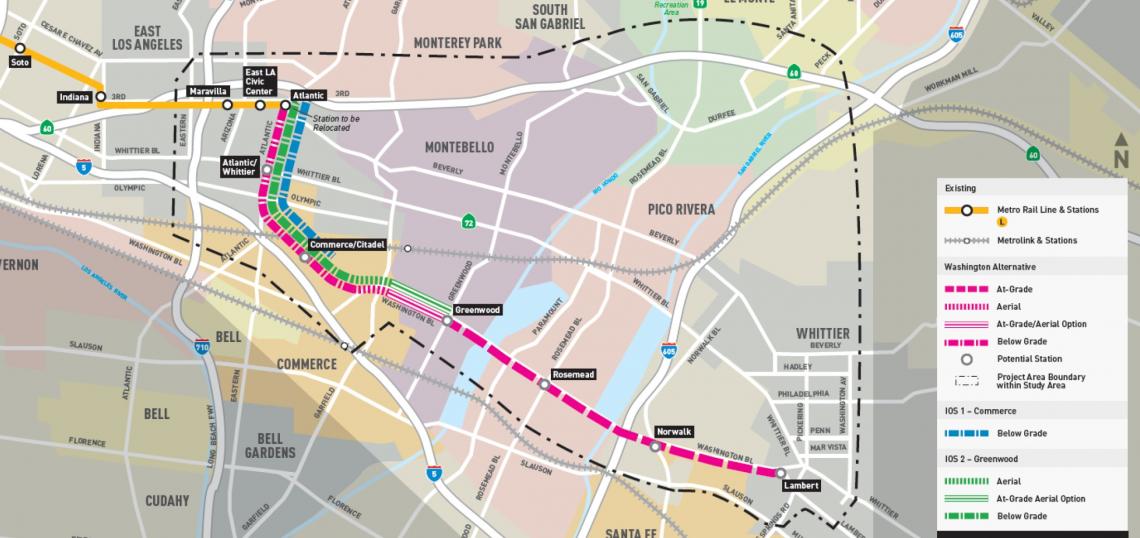Two years ago, citing feasibility challenges, Metro dropped plans for a two-pronged extension of the Eastside Gold (L) Line, focusing its efforts on a sole alignment running toward the City of Whittier. Now, a staff report indicates that in the wake of rising construction costs, the extension may now be split into phases.
The extension, which would start at the site of the existing Atlantic Station in East Los Angeles, calls for nine miles of new track extending southeast along Atlantic and Washington Boulevards. The alignment would begin as a subway below Atlantic, with a new stop at Whittier Boulevard, before veering east through Commerce to connect with the Citadel, and eventually daylighting to aerial and at-grade tracks through Montebello, Pico Rivera, Santa Fe Springs, and Whittier.
While the extensive grade separation may provide a speedier trip for Metro passengers, the subway and elevated structures come a cost. The staff report estimates that the total cost of the Eastside extension has now swelled to upwards of $6.5 billion - more than double the approximately $3 billion in local funding allocated to the project.
As with the West Santa Ana Branch, another project faced with a price tag that has eclipsed the amount of funding available, Metro's solution to the Eastside extension's woes is to evaluate a phased approach to construction.
Per the staff report, Metro is now evaluated two initial operating segments which would complete a portion of the line with available funding, with the remaining extension delayed to a later date in the future. In one option, the agency would build roughly 3.2 miles of track to connect Atlantic Station with Whittier Boulevard, the Citadel in Commerce, and a new maintenance and storage facility for light rail vehicles. The other alternative, running roughly 4.6 miles, would connect to an alternative maintenance facility and temporary eastern terminus at Greenwood Avenue in Montebello.
The Commerce alternative is expected to cost between $4.5 billion and $5 billion, while estimates for the Greenwood option range from $5.1 billion to $5.3 billion. In either scenario, Metro is expected to pursue federal funding to close the project's financing gap.
Likewise, as reported by Streetsblog, Metro is also studying several design iterations which could slim the project budget.
One change under consideration is at Atlantic Station, where the existing at-grade platform is expected to be demolished and replaced with an underground stop. But rather than build a traditional subway station, Metro could instead construction the new Atlantic Station in a trench which opens to the sky. Likewise, the potential temporary terminus in Montebello could be built at street level, rather than as an aerial station.
The Eastside extension is currently expected to begin construction in 2029, and open for service in 2035.
- Gold Line Eastside Extension (Urbanize LA)






